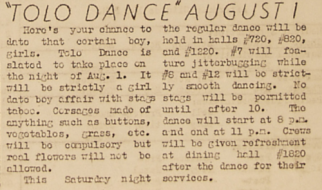Everything you never knew about America?s most wanted couple
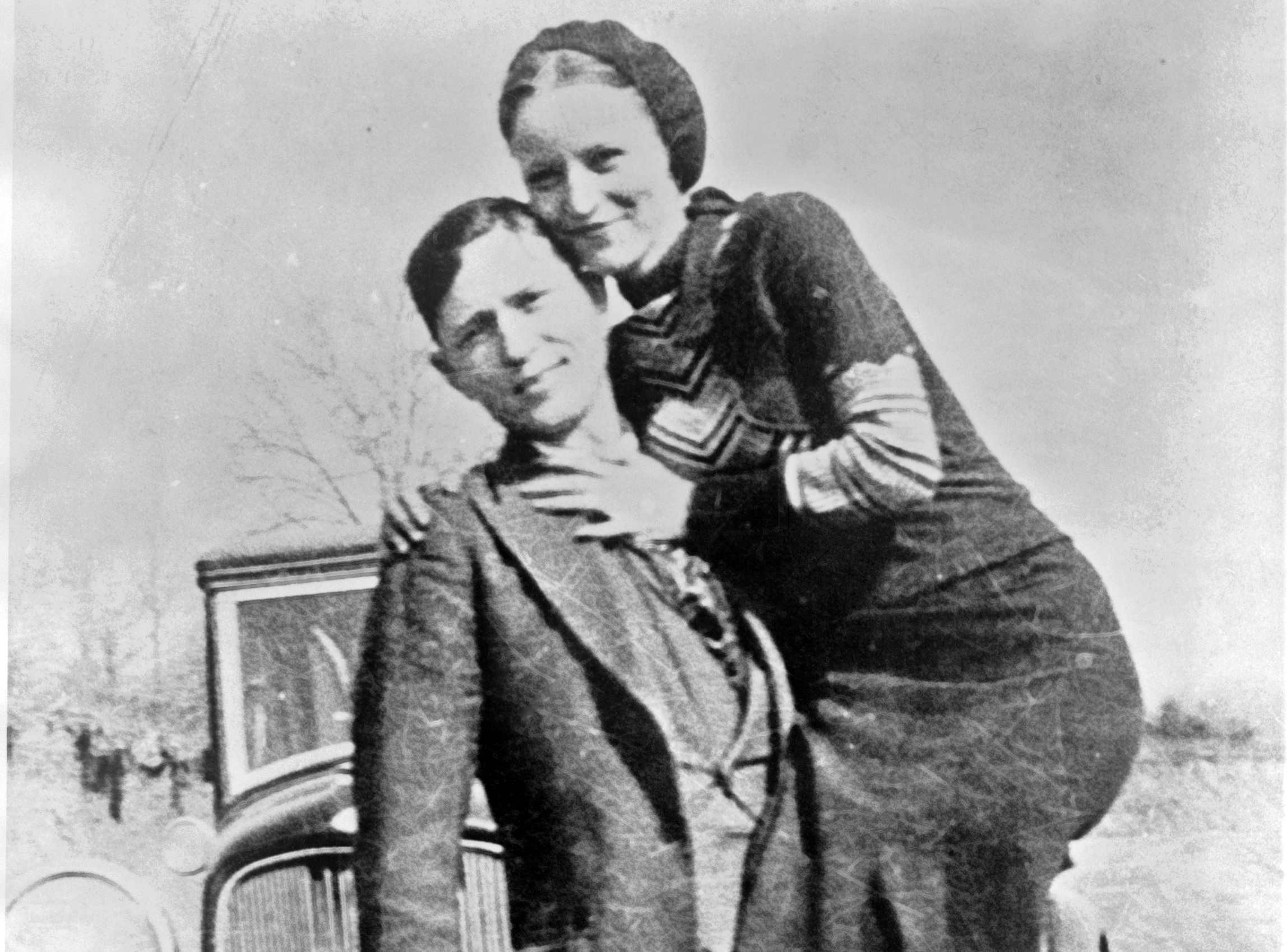 Image via Wikipedia
Image via Wikipedia
Cutting through the soft Louisiana breeze, a beige Ford V8 turns onto the dusty road. The driver is well-dressed. Blue shirt, brown jacket. So is his lady. Red dress, braided hair.
First approaching at high speed, the car soon slows down and comes to a halt next to a truck with a missing tire. Recognizing the father of a friend, the driver rolls down his window. ?Hey Ivy, you need some help with that??
Out of nowhere, a five-shot blast hits the car. One bullet finds the driver?s temple. He dies instantly. A spine-trembling scream erupts from the passenger seat while, from the bushes, six gunmen emerge. Less than a second later, both drown in the thunder and smoke of rifles, shotguns, and pistols.
The car slumps forward, and so do the bodies in their seats as some 150 rounds mark them with near 20 bullet wounds each. Once the dust settles, the gunmens? ears will still be ringing, but one thing is for sure: Bonnie Parker and Clyde Barrow are dead.
On May 23rd, 1934, at about 9:15 AM, Bonnie and Clyde?s two-year crime spree found its abrupt, 16-second ending ? and so did they. With a total of at least 14 murders and over 100 felonies from bank robberies to kidnappings, it was the longest series of crimes in American history at the time.
Today, everyone knows their names, that they were in love, and that they did bad things ? but not much else. Few people know the full story, fewer still the realities behind rose-tinted pop culture references and movies that twist historical accounts.
For example, while honors student Bonnie?s prophetic poems The Story of Suicide Sal and The Trail?s End helped fuel the myth of the couple?s tragic love, the less literary adept Clyde also penned a few stanzas. They show a very different, more realistic perspective of their life on the road:
We don?t want to hurt anney one,but we have to steal to eat.And if it?s a shoot out to live, then that?s the way it?ll have to bee.
Clyde also talks about having little money and no friends, setting up their kidnapped victims to free themselves later, praying to get to the other side of each town they enter, and hoping the grief they?ve caused their parents would subside over the years. He ends with a wish for ?the only thing they live for now? ? one more visit home.
Now that?s not as good as Bonnie?s,so I guess I will call it a flop.But please God just one more visit,before we are put on the spot.
That?s just one of many things you?d never find out about Bonnie and Clyde from watching even the best Youtube video or movie adaptation. Here are nine more.
1. Bonnie Parker most likely never killed anyone.
Even in 1933, a single picture could fool the world. With the Prohibition Act still intact in Missouri, local police expected to capture a few bootleggers when raiding an apartment. Instead, they found Bonnie and Clyde.
During the ensuing shootout, the whole five-person gang escaped ? but their belongings did not. The cops found a role of undeveloped photographs and finalized them to spread the criminals? appeareances far and wide. The picture of Bonnie, toting a cigar and posing casually with a gun, went around the world. Over night, she became the world?s most badass woman.
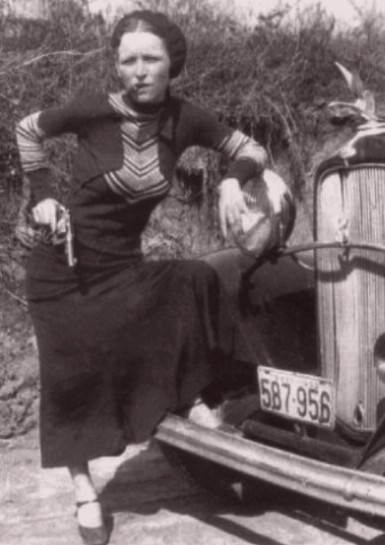 Image via Wikipedia
Image via Wikipedia
In reality, Bonnie just liked the posing part. She didn?t smoke cigars, just Camels. And she likely never killed anyone. Maybe not even fire a gun. The only report of her committing murder comes from a discredited eyewitness. Actually, she wanted to help two victims shot by Clyde and an accomplice, having been asleep in the car at the time of the deed.
Those murders happened in Grapevine, Texas and, as word traveled through the proverbial such, Bonnie soon became a monstrous meme, ?a cold-blooded killer who shot helpless cops in the face, laughing as she pulled the trigger.?
As they did back then, to this day, media perpetuate this image. After all, an evil-to-the-bones, bloodlusty gal sells more copies than another guy with a gun. Whether it?s Avicii?s Addicted To You video, portraying a violent girl-girl version of the two, Beyonc shooting cops in her and Jay-Z?s Run, or Netflix?s The Highwaymen, giving us a victim?s POV, staring down Bonnie?s shotgun, the message is the same: Bonnie was a killer. Fortunately or not, it?s just not true.
2. At the time of their deaths, Bonnie was married to another man.
Despite her propensity towards integrity, Bonnie always had a weak spot for bad guys.
When she met her husband, Roy Thornton, she dropped out of high school and married ? two days before her 16th birthday. Even at the time, that was more than five years younger than the median age for women?s first marriage. She also tattoed ?Roy and Bonnie? on her right thigh. Oh, what a different story it might have been. Then again, that one was also a crook.
 Bonnie and Roy, Image via Dangerous Minds
Bonnie and Roy, Image via Dangerous Minds
Roy disappeared for days on end without explanation or justification, often beating Bonnie for asking too many questions instead. In 1929, he was sentenced to five years in prison for robbery, from where he commented, ?I?m glad they went out like they did,? when he heard of his wife?s death ? the marriage was never officially dissolved.
Thornton died three years later, gunned down during an escape attempt. I?m not sure he did, but Bonnie still wore her wedding ring on the day she died.
3. One of Bonnie?s killers was in love with her.
Ted Hinton was the youngest of the six-men posse who ambushed and killed the infamous couple. His primary job: Identify the targets.
Hinton knew Clyde from their shared days as Western Union messengers and Bonnie from his visits to Marco?s Cafe in Dallas, where she was a waitress before going on the run. Having missed them repeatedly in car chases and failed roadblocks, Hinton was eager to prove himself ? but only when it came to catching Clyde.
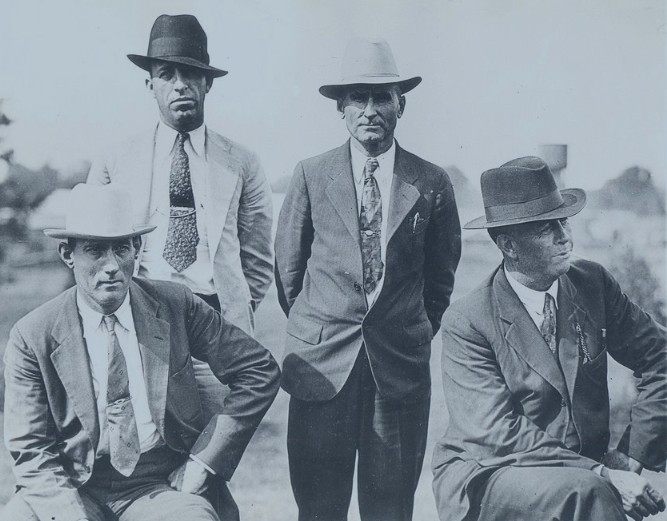 Ted Hinton, second from left, Image via Frank Ballinger
Ted Hinton, second from left, Image via Frank Ballinger
In 1977, the year he died, Hinton wrote a book called Ambush: The Real Story of Bonnie and Clyde. It was published posthumously two years later, revealing plenty of new details, some of which are disputed to this day. What?s hard to dispute is Hinton?s confession that he?d always been in love with Bonnie.
Always a gentleman and a kind customer when he came to see her at the cafe, Hinton believed Bonnie was a sweet girl who just fell for the wrong man. Still, this would do little to close the rift between his head and his heart as he dedicated himself to chasing down the Barrow gang.
He admitted being petrified by Bonnie?s screams in the shooting, and I imagine he might have pulled the trigger less often than his peers, knowing the bullets were meant for someone he?d felt drawn to all these years.
4. Both Bonnie and Clyde walked with a limp.
Though they did survive many a bullet wound in their day, both Bonnie and Clyde were physically disabled.
Shortly after meeting Bonnie, Clyde was imprisoned for auto theft. He escaped using a gun Bonnie smuggled to him, but was soon recaptured and sentenced to 14 years of hard labor. After about two of those years, he had an inmate chop off his left big toe and part of another with an axe. It got him out of the labor part but also ruined his walk for the rest of his life. From now on, Clyde had to drive in socks too. Worst of all, however, he was released from prison just a few days later ? his mom had petitioned for his freedom.
Bonnie was hurt in a car accident one year before their demise. Battery acid caused third-degree burns on her right leg to the point where fellow gang members could ?see the bones in places.? They spent months in hiding, organizing painkillers and a trusted nurse to heal the wounds, but her leg was never the same. She too would walk with a limp from now on, which is why Clyde often carried her if the situation permitted it.
5. Their run lasted as long as it did because they exploited a legal loophole.
Bonnie and Clyde committed crimes in as many as 14 states: Texas, Oklahoma, Kansas, Iowa, Illinois, Missouri, Arkansas, Louisiana, Indiana, Ohio, Kentucky, Tennessee, Mississippi, and Alabama.
The main reason they were able to persist as long as they did despite their many limitations was the ?state line rule.? At the time, legal officers were not to pursue criminals outside their jurisdiction, meaning whoever crossed the border would bring neither recognition nor reward, even if captured. Police pay was low to begin with, so few bothered extending their moral compass beyond state lines.
Bonnie and Clyde always started their loops from Texas, then circled north, east, and back around south, eventually returning home. They visited trusted friends and family where available and, when in doubt, just ran a road block to make the leap across the border. That?s how they stayed afloat for two years.
6. Someone raced the car Bonnie & Clyde were shot in 53 years later.
Kansas local Ruth Warren surely wasn?t happy when her brand new Ford V8 was stolen just weeks after she bought it for a bargain price of $835 (about $15,000 today). But on April 29, 1934, the beige 85-horsepower machine disappeared from her driveaway.
Less than 30 days, 150 bullets, and 2,500 miles later, she had to sue the Louisiana sherriff to get it back without paying $15,000 (about $300,000 today). The car switched hands many times from then on, sometimes being on display, sometimes stored away for a decade, eventually landing in Whiskey Pete?s Casino near Las Vegas in 1987.
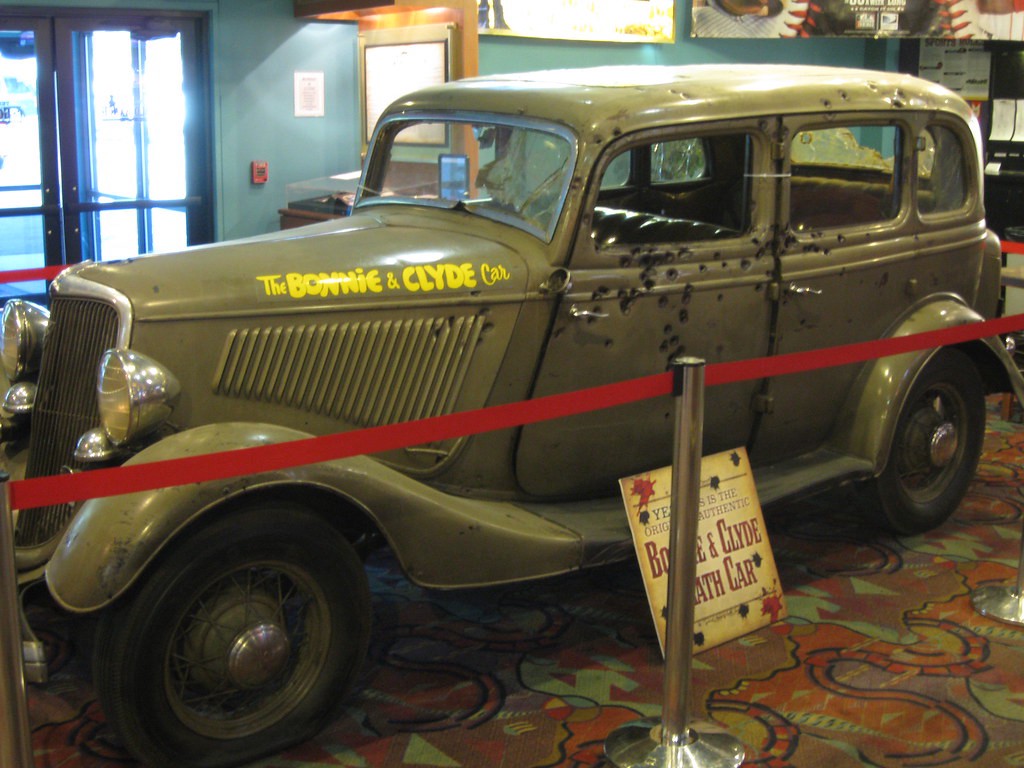 Image via Kummerle on Flickr
Image via Kummerle on Flickr
That same year, they raced it in the Interstate Batteries Great American Race as a publicity stunt. Video footage of the actual car passing Disneyland exists. It has been sitting at Whiskey Pete?s ever since, free to see for every visitor.
7. By the time they died, the public had already turned on Bonnie and Clyde.
Due to Bonnie?s poems, the widespread images, and the context of the Great Depression, the notorious lovers were celebrated as folk heroes in their heyday. Tragic results of tragic times, with an air of Robin Hood to them.
Of course, there was little Robin Hood-ing going on. The Barrow gang stole to survive and gunned down whoever might turn them in. No more, no less. With Bonnie?s supposedly brutal policeman murder, however, the narrative began to change. People started demanding justice.
After the Easter Sunday Grapevine incident, a bounty of $1,500 each was put on Bonnie and Clyde?s heads, with another murder and a kidnapping five days later further escalating the situation. However, even once everyone wanted them dead, they still wanted a piece of their glory.
Within hours of their deaths, 12,000 people flocked to the 2,000-people town in which their bodies were held. Beer prices increased over 50%. People tried to cut off Bonnie?s locks, even Clyde?s ear and trigger finger, while the car was being towed away. Days later, some 20,000 people attended Bonnie Parker?s funeral, and about 15,000 that of Clyde Barrow.
Public perception of Bonnie and Clyde is a fascinating example of: ?Love it or hate it, we still wanna see it.?
8. Bonnie and Clyde were on different missions, knowing their ending would be the same.
What?s the point of it all? Billions of people have asked themselves that question, including Bonnie and Clyde. When it comes to their joined adventure, it seems they only found individual answers.
In her younger years, Bonnie repeatedly wrote the phrase ?Why don?t something happen?? into her diary. She was impatient, aspiring to more than small-town life. She wanted to be an actress, a singer, or a writer.
Ultimately, she was clinging to every shred of excitement in her life. Surely, the fame did the rest. Each next crime must?ve felt exhilarating as much as it was terrifying. That?s why, through her poems, she told us she knew there was only one end to her chasing thrill after thrill.
Meanwhile, it seems Clyde was on a different mission, one to repay the Texas legal system for its supposed crimes against him. Having wanted to be an artist too, a musician perhaps or an entertainer, Clyde?s dreams were shattered early. A debilitating illness left its marks in his childhood, potentially mental problems among them, the Navy rejected him (another tattoo down the drain), and then, there was his abbreviated term in prison.
During his time there, he was raped repeatedly, to the point where he saw no alternative but to crush his bully?s skull with a lead pipe. Of course, this is only the tip of the iceberg of wrongdoings that happen to inmates to this day, but it was enough to push Clyde into a life-long vendetta against the justice system.
Next to surviving, launching a strike against his former enclosure was a top priority for Clyde which, eventually, he ticked off his list. Freeing several prisoners in an organized breakout in early 1934 spurred the Texas government into action and, from then on, it was only a question of how many souls Clyde would be able to take with him before he died.
9. Bonnie and Clyde pushed the formation of a modern criminal investigation system.
After their public deaths and long time on the run, several changes quickly followed in the criminal justice system.
For one, bank robbery and kidnapping became federal offenses, and the Bureau of Investigation became the FBI. This elevated crimes like Clyde and Bonnie?s to a new level of severity ? with equally severe consequences.
Two-way radios were soon installed in all police cars, and the list of over 100 public enemies from the Depression era quickly shrunk in the following months, starting with its number one, John Dillinger.
They say all endings lead to new beginnings, and this one sure made it near-impossible for a similar crime spree to ever happen again.
There?s a part in the famous Disney song Colors of the Wind that I like:
You think the only people who are peopleAre the people who look and think like youBut if you walk the footsteps of a strangerYou?ll learn things you never knew you never knew
In the end, like all of us, Bonnie and Clyde were indeed the results of their time. Their story is unique in some ways, but universal in many others.
It?s easy to see black ? a pair of crooks who got what they deserved ? it?s easy to see white ? tragic lovers who saw no path out but the one they took ? but real life is often grey.
Bonnie and Clyde lived a life of injustice, bad luck, terrible conditions, and frequent horrors ? not just the ones they created themselves, but also the ones they faced. All people in their time did. Many of us do today. It?s in this muck, this muddy soup of externalities, that we make our choices. The ones these two lost hearts made led them down a dusty road in May.
When we learn about history, it?s not just the facts that matter, or even the details behind the obvious, but that we spend our time walking the footsteps of a stranger.
Who knows? We might find things we never knew we never knew.

